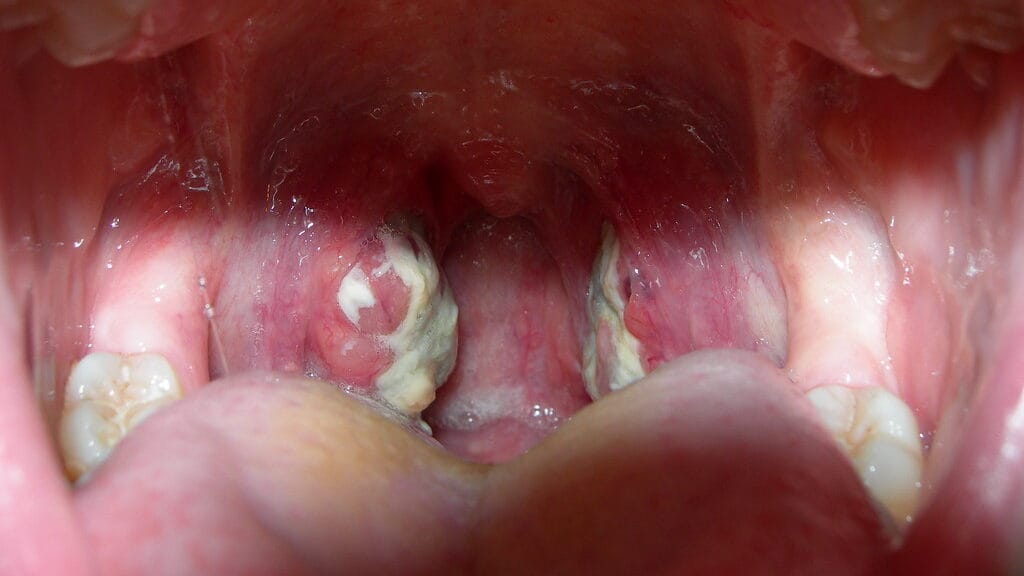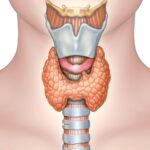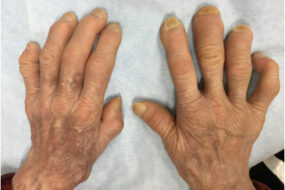- Home
- INTERNAL MEDICINE
- Tonsillitis

Definition
Tonsillitis is an inflammatory condition of the palatine tonsils, lymphoid tissues located in the oropharynx. It can be caused by viral or bacterial infections, leading to varying degrees of inflammation, swelling, and sometimes abscess formation (peritonsillar abscess).
Tonsillitis may present acutely, recur episodically, or become chronic, depending on the frequency and duration of episodes.
Etiology
The etiology of tonsillitis includes both viral and bacterial pathogens:
Viral Causes
Most common, accounting for approximately 70% of cases. Viruses include:
- Adenovirus
- Epstein-Barr virus (EBV)
- Influenza virus
- Parainfluenza virus
- Rhinovirus
- Herpes simplex virus (HSV)
Bacterial Causes
Streptococcus pyogenes (Group A Streptococcus) is the leading bacterial cause, but others may include:
- Group C and G Streptococcus
- Staphylococcus aureus (including MRSA)
- Mycoplasma pneumoniae
- Neisseria gonorrhoeae (rare cases)
Pathophysiology
The tonsils serve as immunologic organs, filtering and responding to pathogens entering the upper respiratory tract. When exposed to infectious agents, the tonsils initiate an immune response involving lymphocytes and macrophages. This response, while protective, also leads to inflammation and symptoms associated with tonsillitis.
Clinical Presentation
Symptoms may vary based on etiology and severity. Common signs and symptoms include:
- Sore throat: Characteristic and usually the primary complaint.
- Tonsillar exudate: Seen in bacterial tonsillitis, particularly with streptococcal infections.
- Swollen, erythematous tonsils: Indicative of inflammation.
- Fever: Common in bacterial causes.
- Dysphagia or odynophagia: Difficulty or painful swallowing.
- Cervical lymphadenopathy: Tender, swollen lymph nodes, especially in the anterior cervical chain.
- Halitosis: Bad breath due to bacterial overgrowth.

Diagnosis
Diagnosis is largely clinical but may be supported by laboratory and imaging studies:
- Clinical Examination: Key findings include tonsillar swelling, erythema, exudate, and cervical lymphadenopathy.
- Throat Swab Culture: Gold standard for bacterial identification. Rapid antigen detection tests (RADT) may be used for Group A Streptococcus.
- Blood Tests:
- Complete Blood Count (CBC): Elevated white blood cells may suggest a bacterial infection.
- Monospot Test: For detecting infectious mononucleosis caused by EBV.
Imaging: Not routinely required, but ultrasound or CT may be used to evaluate suspected peritonsillar abscess.
Management
Management depends on the causative agent and severity:
Viral Tonsillitis:
- Symptomatic treatment with analgesics (acetaminophen, NSAIDs).
- Hydration and rest.
- Topical anesthetics or throat lozenges.
Bacterial Tonsillitis:
- Antibiotic therapy is indicated for confirmed or suspected Group A Streptococcal infections.
- Penicillin V or Amoxicillin is first-line.
- For penicillin-allergic patients, cephalexin, clindamycin, or azithromycin can be used.
- Failure to respond to first-line therapy may warrant reassessment or imaging for complications.
Surgical Management:
- Tonsillectomy: Indicated for recurrent (≥7 episodes in one year, ≥5 per year for two years, or ≥3 per year for three years), obstructive sleep apnea, or suspected malignancy.
Complications
- Peritonsillar Abscess (Quinsy): A pus-filled pocket beside the tonsil, causing severe pain, trismus, and deviation of the uvula.
- Post-streptococcal Glomerulonephritis: Immune response following a streptococcal infection, affecting the kidneys.
- Rheumatic Fever: An autoimmune sequela of untreated Group A Streptococcal infections, potentially causing carditis, arthritis, or chorea.
- Chronic Tonsillitis: Persistent low-grade infection, often requiring tonsillectomy.

Prevention
Preventive strategies include:
- Vaccination: Influenza and other vaccines may reduce the incidence of viral tonsillitis.
- Hygiene Practices: Frequent handwashing and avoiding close contact with infected individuals.
- Appropriate Antibiotic Use: To prevent complications and resistance.
Future Directions
Research is ongoing to explore more effective vaccines against respiratory pathogens, newer diagnostic methods for distinguishing between bacterial and viral tonsillitis, and novel therapeutic approaches targeting immune modulation to minimize inflammation while eradicating pathogens.
Summary
Tonsillitis remains a common condition with diverse etiologies, ranging from benign viral infections to serious bacterial illnesses. Timely diagnosis and appropriate management are crucial to prevent complications, especially in recurrent cases.












